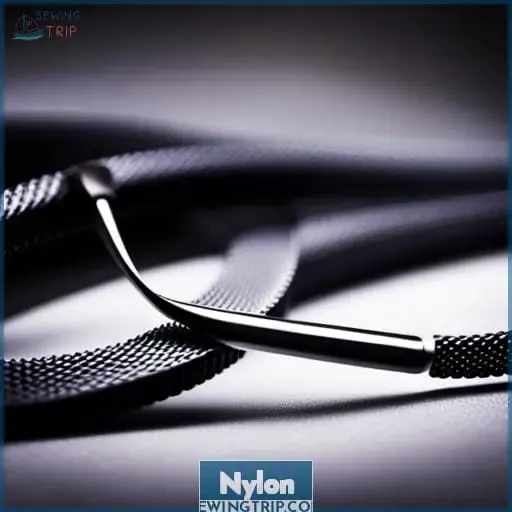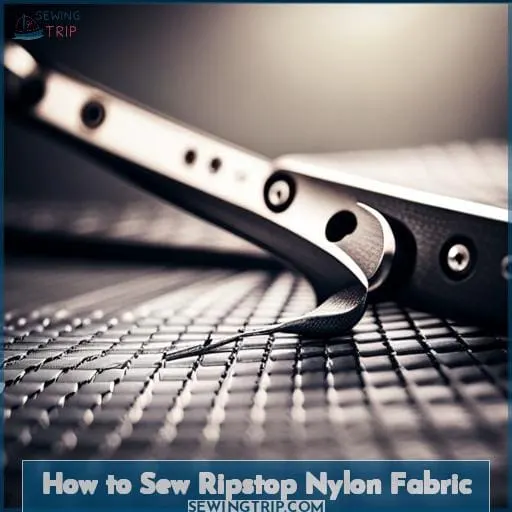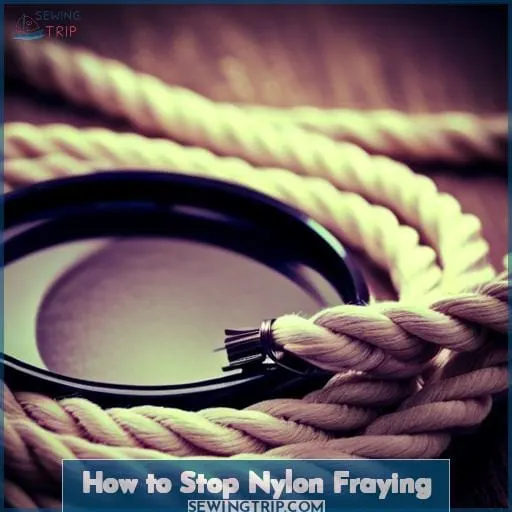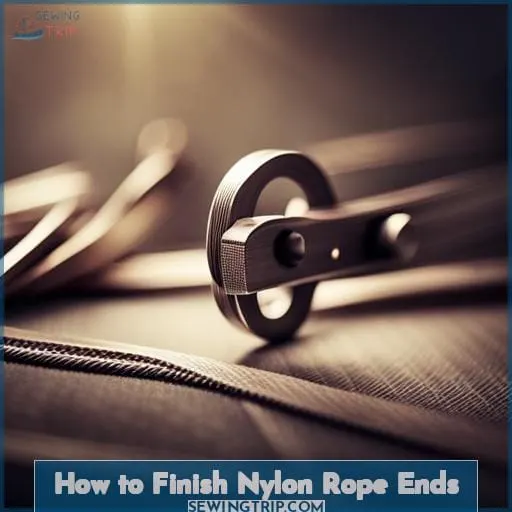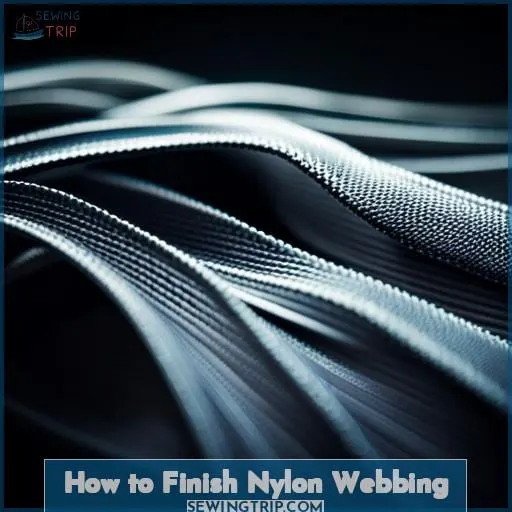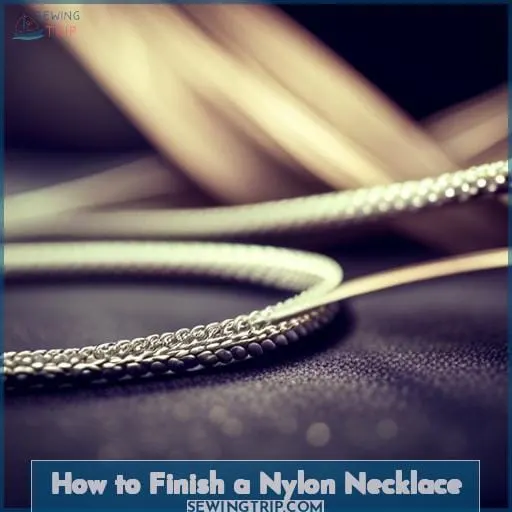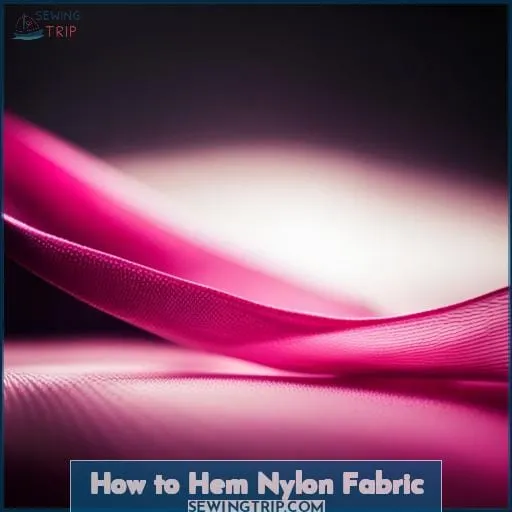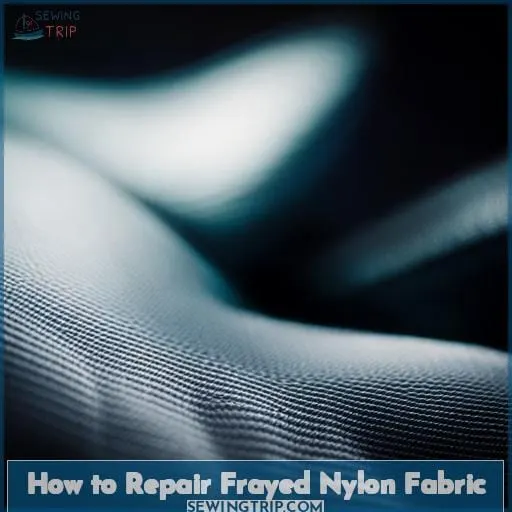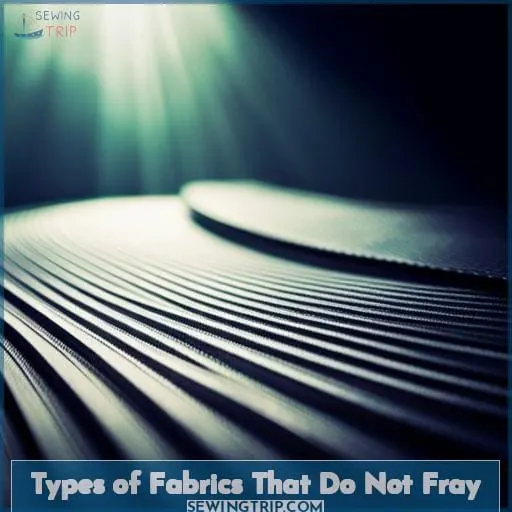This site is supported by our readers. We may earn a commission, at no cost to you, if you purchase through links.
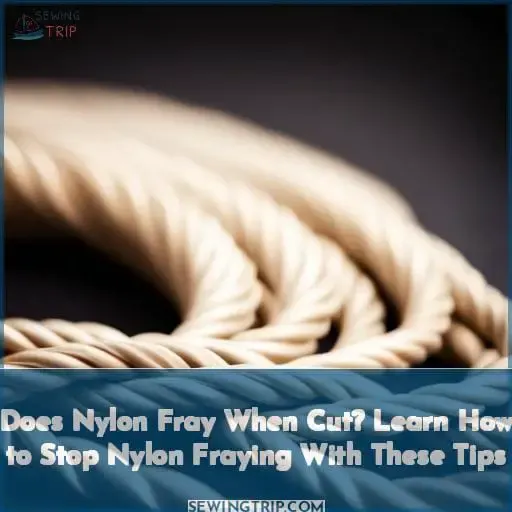 Nylon is a strong and durable fabric, but it can fray easily when cut. Luckily, there are a few simple ways to stop nylon from fraying:
Nylon is a strong and durable fabric, but it can fray easily when cut. Luckily, there are a few simple ways to stop nylon from fraying:
-
Use a hot iron. After cutting the nylon, place the cut edge over an iron and press down for a few seconds. This will melt the nylon fibers together and prevent them from fraying.
-
Apply a fray stop product. There are a number of different fray stop products available on the market, such as Fray Check and Liquid Stitch. These products can be applied to the cut edge of the nylon to help prevent it from fraying.
-
Use a seam sealant. A seam sealant is a clear liquid that can be applied to the cut edge of the nylon to help prevent it from fraying. Seam sealants are available at most hardware stores.
-
Turn the nylon inside out. If you are not going to be sewing the nylon, you can turn it inside out before cutting it. This will help to prevent the cut edge from fraying.
-
Use a zigzag stitch. If you are sewing the nylon, use a zigzag stitch to help prevent the cut edge from fraying.
Table Of Contents
- Key Takeaways
- Nylon
- Ripstop Nylon
- How to Sew Ripstop Nylon Fabric
- How to Stop Nylon Fraying
- How to Finish Nylon Rope Ends
- How to Finish Nylon Webbing
- How to Finish a Nylon Necklace
- How to Hem Nylon Fabric
- How to Repair Frayed Nylon Fabric
- Types of Fabrics That Do Not Fray
- Frequently Asked Questions (FAQs)
- Conclusion
Key Takeaways
- Nylon does fray when cut.
- To prevent nylon from fraying, you can use a candle method, a soldering iron, hem the nylon, burn the edges with a lighter or torch, or apply a seam sealant.
- Nylon rope ends can be finished by melting the ends with a lighter or torch, or applying a dab of super glue.
- Nylon webbing can be finished by melting the cut ends with a flame, or using a lighter to singe the threads.
Nylon
Nylon is a lightweight, durable textile that’s water repellent and comes in various weights and thicknesses. It’s made from a synthetic polymer called polyamide, which has a melting point of 480 degrees Fahrenheit.
Nylon is strong and elastic, but it’s also susceptible to fraying. There are a few ways to stop nylon from fraying, including using a candle method, a soldering iron, or a hem.
If nylon is already frayed, it can be repaired by melting the frayed strands together with a flame, using epoxy made for sealing nylon, using repair tape, or using seam sealer compound or fabric.
Ripstop Nylon
Ripstop nylon is a lightweight, durable textile that’s water repellent and comes in various weights and thicknesses.
Ripstop nylon fabric is used for a variety of applications, including:
- Kites
- Sails
- Jackets
- Parachutes
- Banners/flags
How to Sew Ripstop Nylon Fabric
To sew ripstop nylon fabric, you’ll need:
- A sharp, pointed needle
- A roller presser foot
- A commercial quality, 100 percent nylon or 100 percent polyester thread
Here are some tips for sewing ripstop nylon fabric:
- Use a sharp, pointed needle.
- Use a roller presser foot.
- Set your machine to produce no more than eleven stitches per inch.
- Use about eight stitches per inch when you sew ripstop nylon.
- Use sharp scissors or a rotary fabric cutter to reduce fraying of the nylon.
How to Stop Nylon Fraying
There are a few ways to stop nylon from fraying when you cut it:
- Use a candle method.
- Light a candle and hold the cut edge of the nylon over the flame for a few seconds. This will melt the nylon fibers together and stop them from fraying.
- Use a soldering iron.
- Heat the tip of a soldering iron and carefully run it along the cut edge of the nylon. This will melt the nylon fibers together and stop them from fraying.
- Hem the nylon.
- Fold the cut edge of the nylon over twice and sew it down to create a hem. This will prevent the nylon from fraying.
How to Finish Nylon Rope Ends
Finishing nylon rope ends is easily achieved by using a heat source to melt the fibers together.
Here are 3 methods for finishing nylon rope ends:
- Use a lighter. Hold the flame of the lighter close to the end of the rope until the fibers melt together.
- Use a soldering iron. Heat the tip of the soldering iron and touch it to the end of the rope.
- Use a hot knife. Heat the blade of the hot knife and slice off the end of the rope.
How to Finish Nylon Webbing
After cutting nylon webbing, seal the raw edges to prevent fraying with a lighter or a heated tool.
How to Finish Nylon Webbing
- Burn the edges. Hold a lighter or a heated tool close to the cut edges of the webbing until they melt and seal.
- Use a seam sealant. Apply a seam sealant to the cut edges of the webbing. Allow the sealant to dry completely before using the webbing.
- Hem the edges. Fold the cut edges of the webbing over 1/2 inch and sew them down.
- Use a binding. Apply a binding to the cut edges of the webbing.
- Tape the edges. Apply tape to the cut edges of the webbing.
How to Finish a Nylon Necklace
To finish a nylon necklace, you can melt the ends of the nylon cord together with a lighter or candle.
Here are 5 tips to help you finish your nylon necklace:
- Use a sharp pair of scissors to cut the nylon cord to the desired length.
- Hold the ends of the nylon cord together with one hand and use a lighter or candle to melt the ends together.
- Allow the melted ends to cool and harden.
- Trim any excess nylon cord from the ends of the necklace.
- Enjoy your new nylon necklace!
How to Hem Nylon Fabric
You can hem nylon fabric to prevent it from fraying. Here are 5 ways to hem nylon fabric:
- Use a zigzag stitch or an overlock stitch to finish the edges of the fabric.
- Fold the fabric over twice and press.
- Stitch the hem in place using a straight stitch.
- Use pinking shears to cut the edges of the fabric.
- Apply seam sealant to the edges of the fabric to prevent fraying.
How to Repair Frayed Nylon Fabric
If nylon is already frayed, you can repair it by:
- Melting the frayed strands together with a flame.
- Using epoxy made for sealing nylon.
- Using repair tape.
- Using seam sealer compound or fabric.
- Applying a product specifically designed to prevent fraying.
Types of Fabrics That Do Not Fray
Although nylon frays when cut, there are other fabrics that don’t fray, such as polyester and cotton.
Polyester is a synthetic fabric that’s made from petroleum products. It’s strong and durable, and it doesn’t fray easily.
Cotton is a natural fiber that’s made from the fibers of the cotton plant. It’s also strong and durable, and it doesn’t fray easily.
Other fabrics that don’t fray include leather, wool, and canvas.
Frequently Asked Questions (FAQs)
What is the difference between nylon and ripstop nylon?
Ripstop nylon is a type of nylon fabric that has a special weave pattern and reinforced threads.
It’s lightweight, durable, water repellent, and used in various applications such as:
- Kites
- Sails
- Jackets
- Parachutes
- Banners/flags
How do you sew ripstop nylon fabric?
To sew ripstop nylon fabric, use:
- A sharp, pointed needle
- A roller presser foot
- Set your machine to produce no more than eleven stitches per inch
How do you stop nylon from fraying?
Nylon will fray when cut, but you can stop the fraying process by using:
- A candle method
- A soldering iron
- Hemming the nylon
How do you finish nylon rope ends?
To finish nylon rope ends,
- Melt the ends with a lighter or torch.
- Apply a dab of super glue.
How do you finish nylon webbing?
To finish nylon webbing,
- Melt the cut ends with a flame
- Or use a lighter to singe the threads.
Conclusion
Nylon is a strong and durable fabric, but it can fray easily when cut. Luckily, there are a few simple ways to stop nylon from fraying. By following these tips, you can keep your nylon projects looking their best for years to come.
- Use a fray stop product. Fray stop products are available at most fabric stores and come in a variety of forms, including sprays, pens, and liquids. They work by creating a barrier between the fibers of the fabric, preventing them from fraying.
- Apply a thin coat of clear nail polish to the cut edges of the fabric. This will help to seal the fibers and prevent them from fraying.
- Turn the cut edges of the fabric under and sew them down. This is a more permanent solution than using a fray stop product or clear nail polish, but it does require some sewing skills.
- Trim the cut edges of the fabric with a pair of sharp scissors. This will help to remove any loose fibers that could start to fray.
- Be careful not to cut the fabric too close to the edge, as this could cause the fabric to fray.

